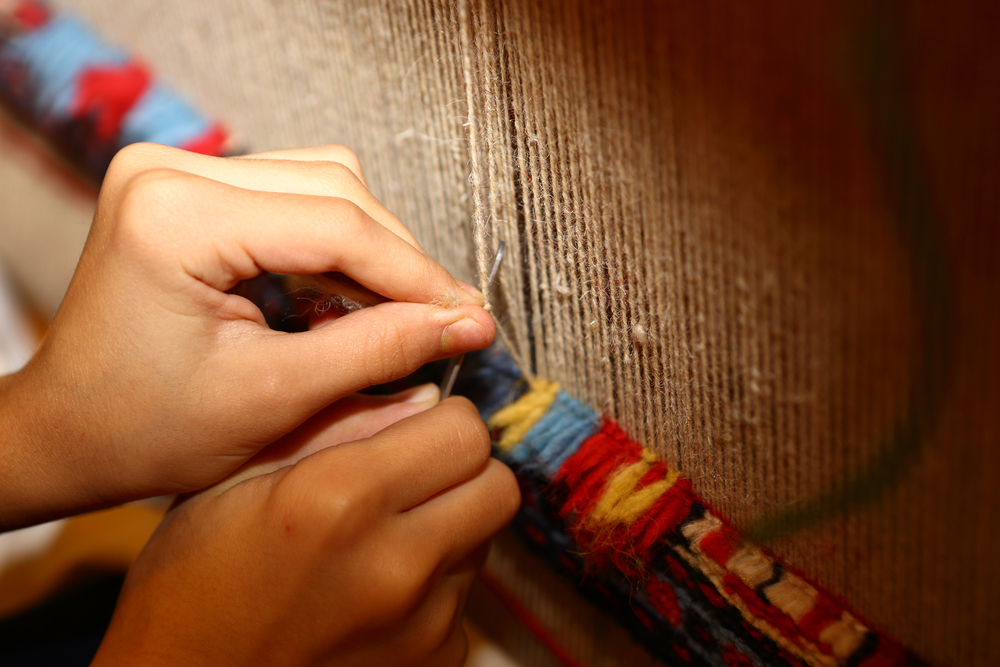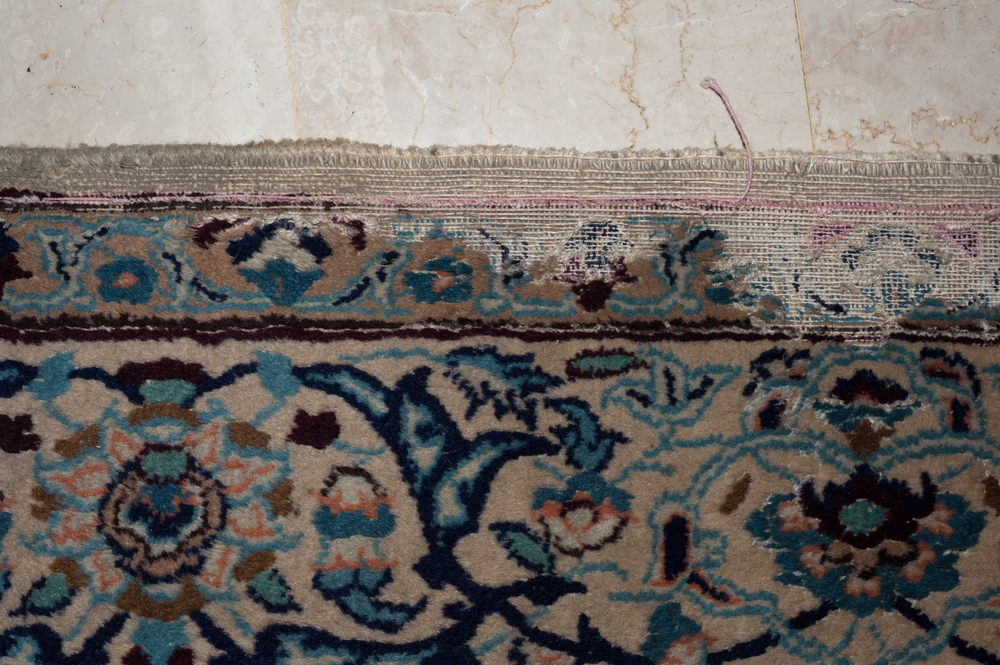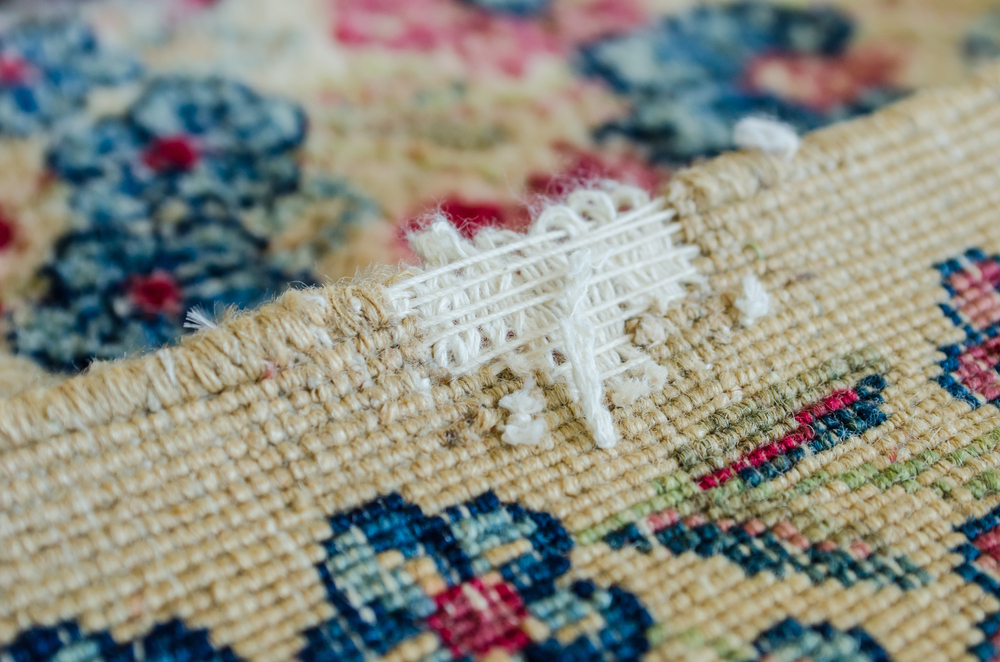Many rug owners worry that they need to treat their valuable hand knotted rugs like fine china. However, oriental rugs have earned their magical reputation because of their sheer endurance. When oriental rugs are dirty they can easily be washed and repaired by professional rug cleaners like Woods Rug Laundry. In fact, many authentic rugs from the Middle East are thrown into the streets so they can be aged by the passing traffic – and they come out looking incredible!
However, rugs still need a great atmosphere and some attention to protect them from their natural enemies. Join our team as we discuss how to care for hand knotted rugs!

1: Sunlight
You need to protect your hand knotted rug from direct sunlight. Sunlight streaming through windows directly onto a rug is guaranteed to harm it. Naturally dyed, hand knotted rugs and synthetically dyed rugs are all at risk of fading in sunlight. Further, sunlight will fade your colours and rug unevenly, while also drying out the cotton and wool, making the rug brittle. If in direct sunlight, you can ruin a rug in a month or less.
Sunny rooms, that are not in direct sunlight, can still harm your rug. Some rugs can’t take as much light as others, so it is difficult to say how your rug will react. It is best to check the colours of your rug on the front and back. If the pile has become a paler colour than the backing, it’s time to move your rug to a less bright room. If you can’t avoid having your rug in a sunny room, consider having our windows tinted to filter out harmful UV light. This will also take a few degrees off in summer!
2: Moths
After sunlight, the second major enemy of the hand knotted rug is moths. The most dangerous of these are very small and hardly noticeable. These moths are the same you’d find in a pantry or among wool clothes. Most of the damage these moths do is in their larval stage where they eat tracks in wool rugs.
However, moths rarely attack rugs that are in regular use. So if your rug is in a high traffic area, you’ll likely be safe! But if you keep your rug in storage or under furniture, you need to be cautious as moths prefer dark, undisturbed places. Ensure you regularly turn, vacuum and sweep rugs that are positioned partially under furniture.

3: Storing Hand Knotted Rugs Safely
Which leads us to storing your rug. As we said above, moths like to feast on rugs that are stored or sit undisturbed. Moths also love dirty rugs. As a result, we recommend you have your rug cleaned before storing it away. Professional cleaners can also pack your rug safely in moisture absorbent paper for storage, to help prevent any vermin sneaking in.
It is also important to store the rug where the protective paper can’t get pierced or damp. Even a small tear can result in moths or bugs invading and destroying your rug. And damp can cause mould or mildew which is equally dangerous to a rug.
4: Mould, Mildew and Dry Rot
If rugs stay wet too long, they risk mildew, mould and, eventually, dry rot. The most common cause of mildew and dry rot is when a potted plant is placed on or near a rug. Pot plants cause a terrible, rotted ring on an otherwise perfect rug, destroying it.
No matter how careful you are, glazed pots, glazed saucers, and vapour barriers will not prevent your rug getting wet. Many times, owners are unaware of how wet their rug is until a huge – up to and over a foot in diameter – rotten ring appears.
Further, when a rug is poorly stored, they can become wet without anyone realising it. While dry rot is not inevitable in all cases, the mildew smell is and sometimes even professional cleaners can’t remove that smell.
A rug that gets wet can also run or bleed, which is why it is best to keep water well away from your rug – this includes aquariums, too, that may leak or spill water during cleaning.

5: Ends, Edges and Holes
Ends and edges are generally the first parts of a rug that need attention as the rug ages. As a result, it is critical to keep them in good condition to avoid expensive repairs. Typically the fringe of a rug begins to wear after 10-15 years. Fringe can be replaced, though a new fringe on an old rug can look inappropriate. Thankfully fringe is not structural and your rug will suffer no harm if you have it professionally removed.
Wear of the end finish, however, is another issue. Rugs are bound on their ends in a number of ways, to keep the foundation intact. If the foundation frays, a rug begins to lose its pile and that requires expensive repair work. That’s if the rug can be repaired. Adding new selvages and ends to a rug is an art, as the new selvages need to blend into the rug.
There are a number of other miscellaneous problems a rug can incur. These include holes, wrinkle lines, curling edges, visible wear, etc. These are expensive to fix and avoiding too much wear and tear is important. Rotating your rugs, especially in high traffic areas, is important to keep this wear and tear occurring.
6: Should I Use Rug Pads?
Traditionally, hand knotted rugs are made to be used in homes where shoes are taken off. This is why, in general, oriental rugs do not utilise rug pads. However, in Western homes, some people use rug pads to increase the softness under foot as well as prevent accidents that can be caused by rugs slipping on hardwood floors. Don’t forget to check your rug pads, however, as they can dry out over time and need replacing.
Is your hand knotted rug in need of professional cleaning? Contact the team at Woods Rug Laundry today for help! Our team is experienced in a wide range of rug types and styles, and we also offer home pick up and delivery!
